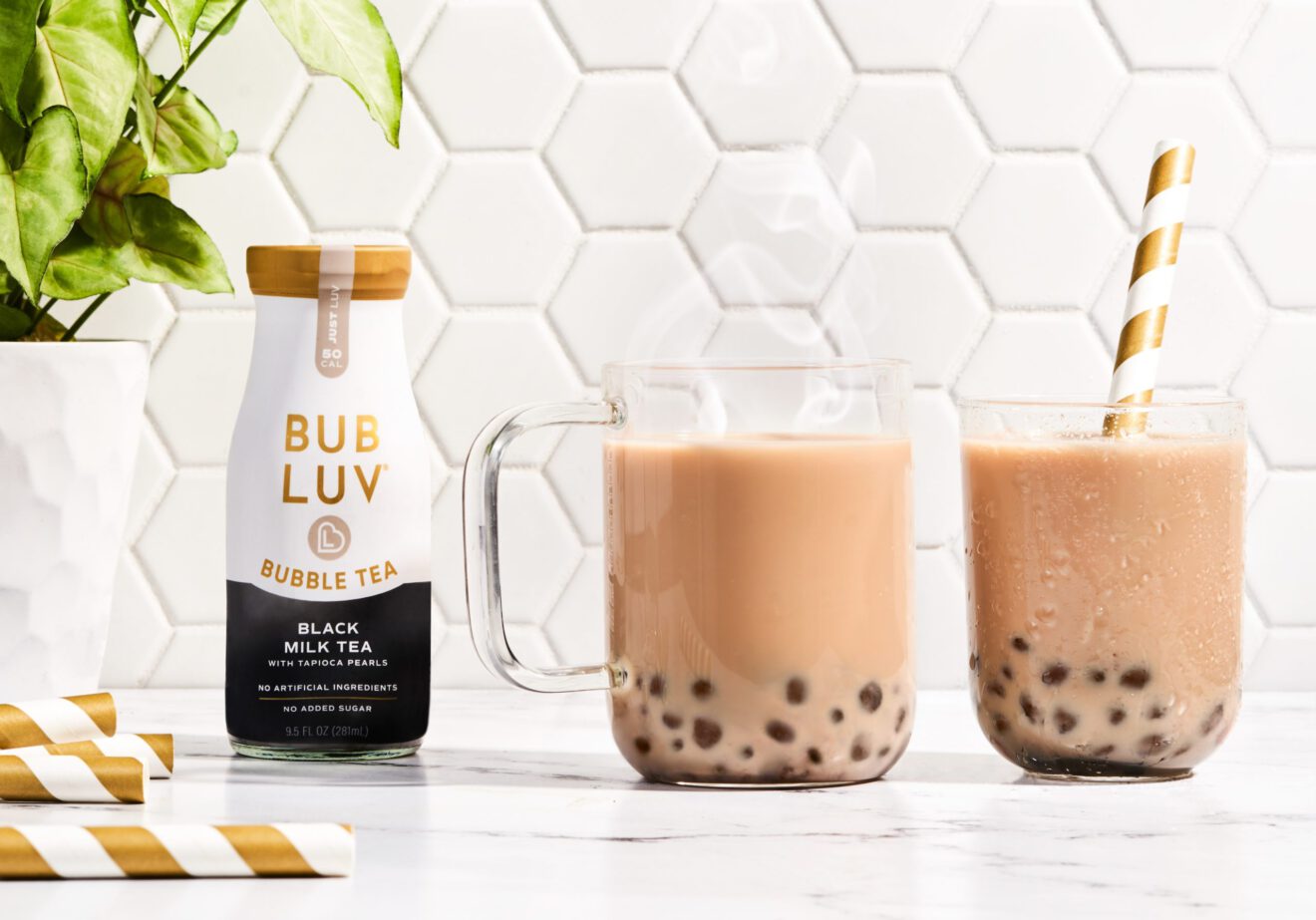Sign up for ABA SmartBrief today, free.
Bubble tea, a tea-based drink that contains chewy tapioca balls called boba or pearls, was created in Taiwan in the 1980s. While the delicious beverage has existed for decades, bubble tea has experienced an enormous surge in popularity over the past few years with tea shops specializing in the drink popping up worldwide.
“Boba sits at the intersection of a handful of exciting growing trends – globally inspired foods, flavor and texture exploration, and experiences that are worthy of sharing on social,” said Chelsea Bialla, chief marketing officer of BobaBam, a frozen bubble tea product.
Diana Ark Chen, founder and CEO of Bubluv, a ready-to-drink bubble tea brand, agreed with Bialla that those aspects have caused boba drinks to trend, adding that Asian flavors in particular are generating interest from consumers as well as “the innovative nature of boba itself.”
Bringing the bubble tea shop into homes
Tea shops offering beverages with boba have become practically mainstream, and bubble tea products are now beginning to enter the consumer packaged goods market, indicating consumers’ desire to replicate the experience at home. BobaBam and Bubluv are certainly leaders in the category, but retailers Costco and Trader Joe’s both introduced their own instant boba tea kits this year.
“You can have the taste of boba without leaving your home, without waiting in line, and can skip the prep and clean up required when you make it yourself,” said Chen. “Having an RTD option also makes it more accessible to those in the middle of the country who might not have tea shops readily available to them.”
Bialla echoed those sentiments, adding that another benefit of instant boba at home is far more cost-effective for customers compared to fresh bubble tea bought in a shop. The cost savings as well as the convenience have caused the drink to become “a staple in their freezer rather than an occasional treat,” she said.
Chen also shared that Bubluv had to address the challenges of creating a shelf-stable version of bubble tea before debuting the product. Preserving the shelf life and creating the right texture for the boba pearls without using any artificial ingredients were the main hurdles to overcome.
Expanding boba’s retail presence
Bubluv is available to buy on the brand’s website, but the company has set its sights on traditional retail, according to Chen. She shared that the plan is to gain distribution in the Northeast market by the end of the year because the company expects a high potential in brick-and-mortar stores over DTC purchases, especially due to Bubluv’s status as a better-for-you beverage. Its keto-friendly and gluten-free drinks have less sugar and fewer calories than typical bubble teas.
“Boba is a unique and fun drink with experiential elements of a textural topping and a straw, which is unlike any other drink in the US,” said Chen.
BobaBam is also focused on its retail presence; its frozen offerings can be bought at Costco and Sam’s Club across the country as well as ALDI stores in California and Texas. Bialla said that the launch was successful and confirmed that consumers are eager to try its products. That validation has prompted BobaBam to pursue expanding its own distribution into new retail channels to keep up with consumers’ desire for instant bubble tea.
“Boba is delicious, unique, and makes people smile – it is hard not to love,” said Bialla.
Recent related stories:
- Functional fungi: Mushroom-based drinks deliver health benefits
- Consumer trends in food shopping today
- Emerging brands shine at pop-up food retailers
_____________________________________
If you liked this article, sign up for SmartBrief’s free email newsletter from American Beverage. It’s among SmartBrief’s more than 250 industry-focused newsletters.
